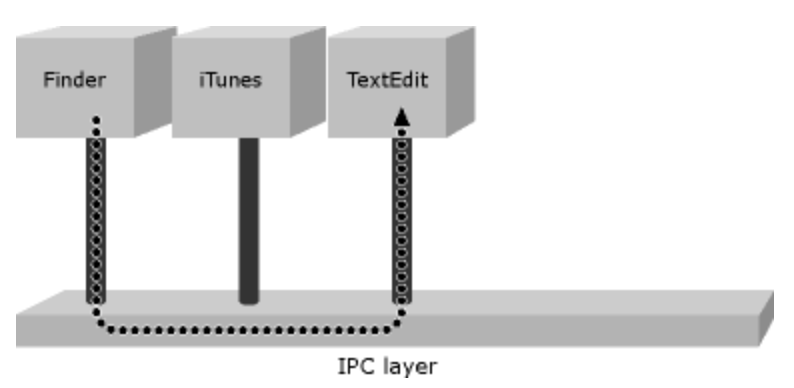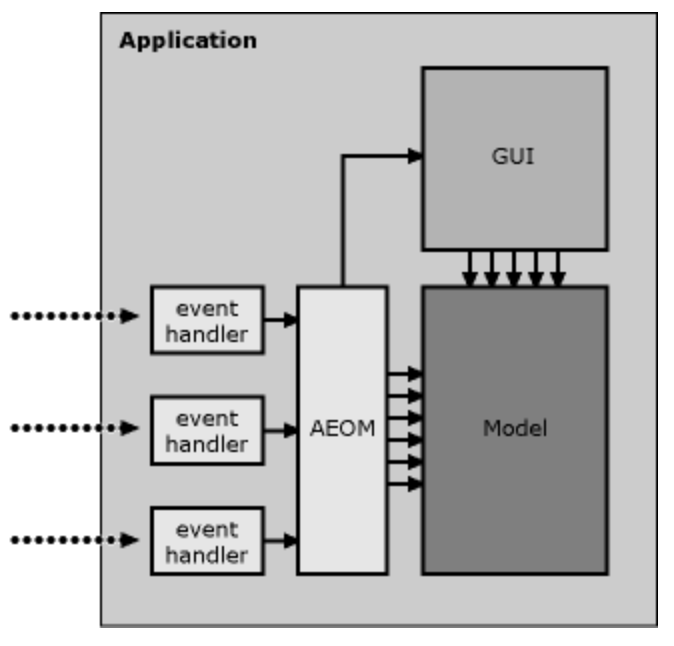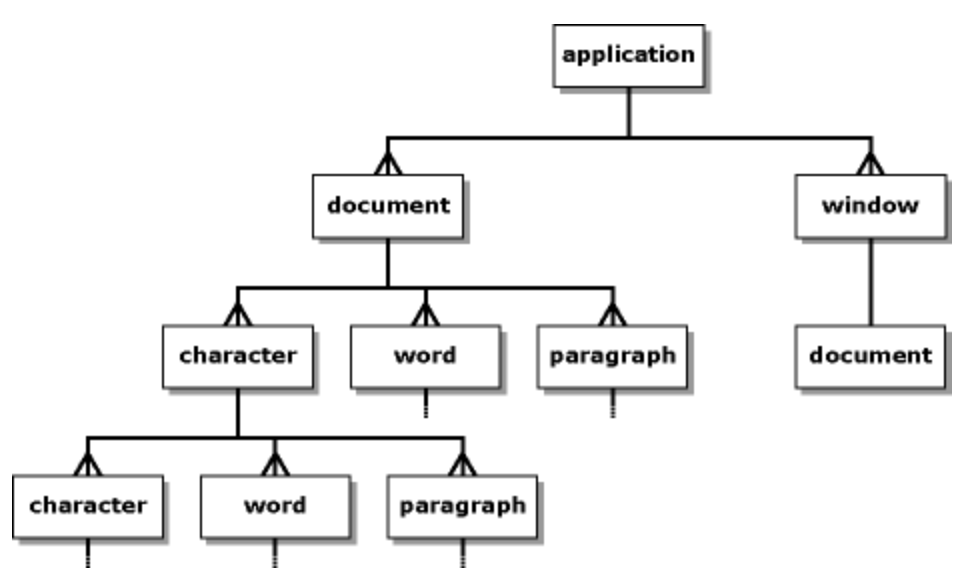Apple Events
Apple events are a high-level message-based form of Interprocess Communication (IPC), used to communicate between local or remote application processes
An Apple Event contains:
- Attributes describing how the event should be handled
- optional parameters to the event handler that receives the event
Example
- When we drag-n-drop a file onto the TextEdit.app icon in Finder, what happens is that Finder commands TextEdit to open that file by sending it an
odoc(open doc) event with a list of file identifiers as its parameter
With proper bindings, Apple events can be created and sent with programming languages
- ex. from our client application, we might call
iTunes().play(), causing a hook/Play event to be sent from the client application to iTunes, instructing it to start playing. Applications may respond to an incoming Apple event by sending a reply event back to the client application
Apple Event Object Model (AEOM)
The AEOM is a view-controller layer that provides a user-friendly representation of the application's internal data, allowing clients to identify and manipulate parts of that structure via Apple events
- An incoming Apple event representing a particular command (get, set, move, etc.) is unpacked, and any object specifiers in its parameter list are evaluated against the application's AEOM to identify the user-level object(s) upon which the command should act
- The command is then applied these objects, with the AEOM translating this into operations upon the application's implementation-level objects
- These implementation-level objects are mostly user-data objects in the application's Model layer

- The AEOM represents user data as a tree-shaped object graph, whose nodes are connected via 1:1 and/or 1:many relationships.
- AEOM objects are identified by high-level queries (comparable to XPath or CSS selectors), not low-level chained method calls.
- While the Apple Event Object Model is sometimes described by third-parties as being similar to DOM, this is inaccurate as AEOM operates at a much higher level of abstraction than DOM.
The AEOM is a tree-like structure made up of objects. These objects may contain descriptive attributes such as class, name, id, size, or bounds; for example:
finder.version
itunes.playerState
textedit.frontmost
finder.home
textedit.documents
itunes.playlists
Unlike other object models such as DOM, objects within the AEOM are associated with one another by relationships rather than simple physical containment Relationships between objects may be one-to-one:
finder.home
itunes.currentTrack
or one-to-many:
finder.folders
itunes.playlists
to show how how this tree-like structure is not related to containment (as the DOM is), consider that the following object specifiers all identify the same objects (files on the user's desktop):
- the first specifier describes the files' location by physical containment; the other two use other relationships provided by the application as convenient shortcuts
finder.disks["Macintosh HD"].folders["Users"].folders["kyletycholiz"].folders["Desktop"].files
finder.desktop.files
finder.files
Here is the AEOM for a simple hypothetical text editor:

Backlinks